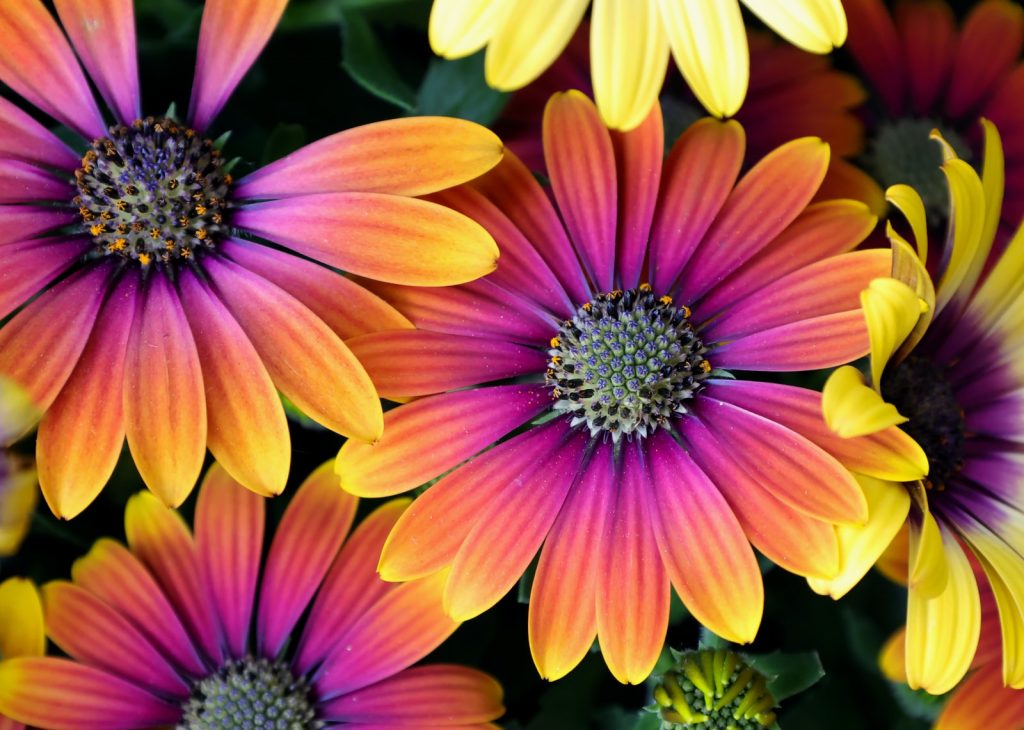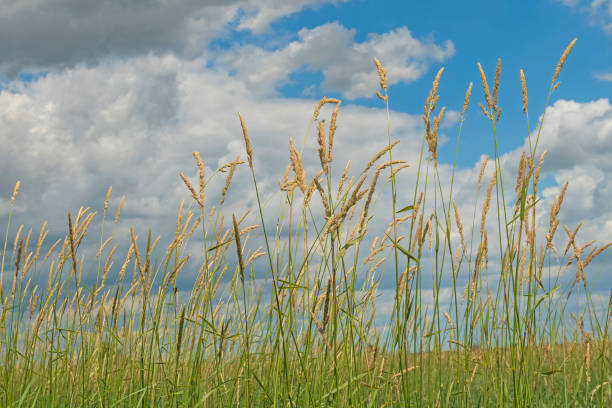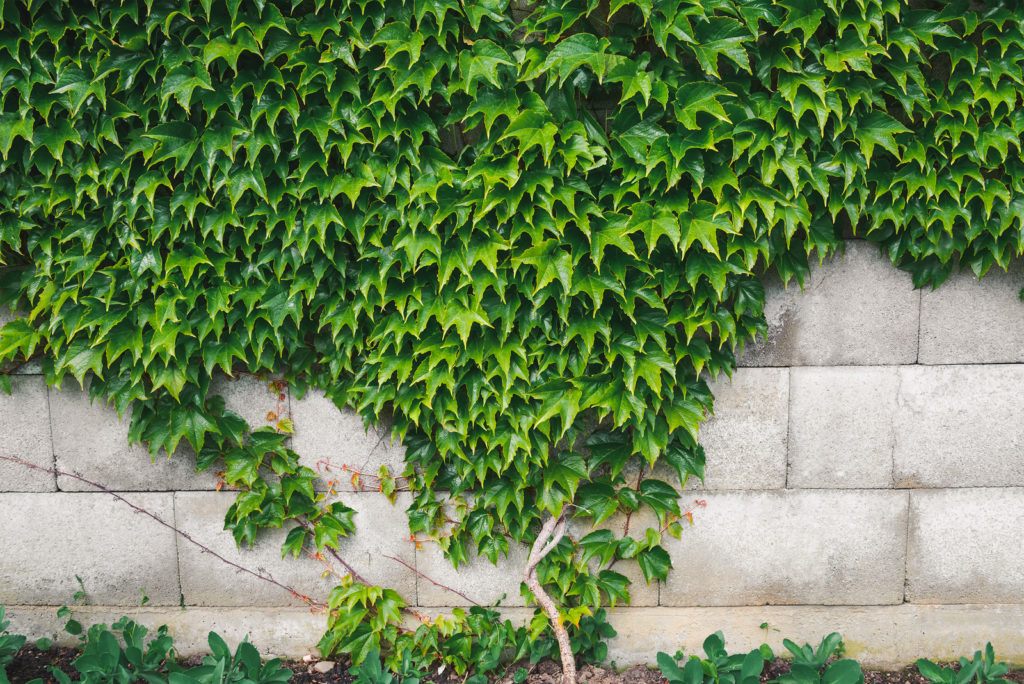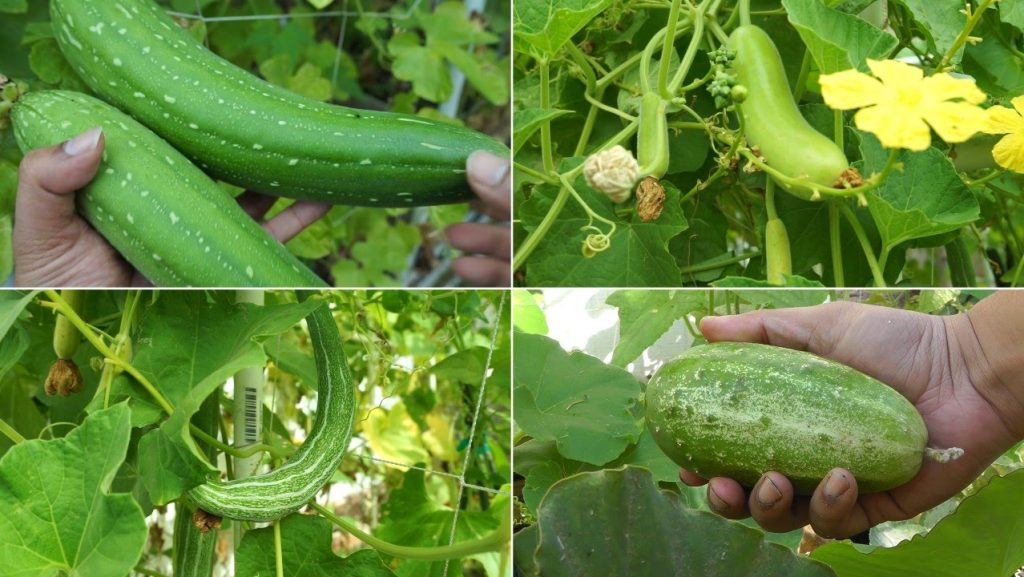Ice plant – Aizoaceae

Mesembryanthemum crystallinum is a prostrate succulent plant native to Africa, Sinai and southern Europe, and naturalized in the New World. The plant is covered with large, glistening bladder cells or water vesicles, reflected in its common names of common ice plant, crystalline ice plant or ice plant. Ice plant is used in ascites (accumulation of fluid in the abdomen), dysentery, liver and kidney diseases and pneumonia. Used externally it relieves itching, pain, swelling and redness of the skin.
Indigo-bush – Amorpha fruticose

Indigo–bush is a medium to large, finely textured, native shrub for wet to dry soils. The one foot long, compound leaves are a gray-green. It is often cultivated as an ornamental plant. It has minor edible use and some additional uses including: Bedding; Dye; Insecticide; Oil; Repellent; Shelterbelt; and Soil. Plants have an extensive root system and are also fairly wind tolerant, they can be planted as a windbreak and also to prevent soil erosion. Resinous pustules on the plant contain ‘amorpha’, a contact and stomachic insecticide that also acts as an insect repellent.
Indian Pink - Spigelia marilandica

Indian Pink is a generally good flower remedy for learning how to manage stress in daily life, and can be used with other synergistic flowers such as Dill and Chamomile. The whole plant, but especially the root, is anthelmintic and narcotic. A safe and effective anthelmintic when used in the proper dosage, it is especially effective with tapeworms and roundworm.
Indiangrass - Sorghastrum nutans

Also called Indian grass, is a North American prairie grass, and is the official state grass of both Oklahoma and South Carolina. Indian Grass can be planted in mass or blended into naturalized areas. It can also be used as vertical accents along garden borders. It grows easily from seed with no pre-treatment necessary, and various kinds of soil are tolerated. Plant in full to partial sun, and water regularly but do not over water; although periods of flooding or drought are tolerated.
Ironwood Tree - Olneya tesota

Olneya tesota is a perennial flowering tree of the family Fabaceae, legumes, which is commonly known as ironwood, desert ironwood, or palo fierro in Spanish. Mesua ferrea commonly known as Ironwood Tree is an ornamental and hardwood timber tree native to Sri Lanka, India, southern Nepal, Burma, Thailand, Indochina, the Philippines, Malaysia and Sumatra. It grows well in river valleys of the evergreen forests of The Himalayas and Western Ghat Hills of Konkan and Malabar area.
Ivy - Hedera helix

Most common type of growth lacks flowers and has dull green, lobed leaves with light veins that grow alternately along trailing or climbing stems. Leaf shape and size varies between varieties from deeply to shallowly lobed and from small, narrow leaves to large, broadly shaped leaves.
Ivory Tree - Holarrhena pubescens

There are trees known as multipurpose trees (MPT) used for different purposes. A few provide timber for commercial purposes but endowed with medicinal properties besides being ornamental. “The Ivory Wood” tree, used for making Channa Patna toys, belongs to this category. The wood turns to ivory color with age. That is why the name. Fibers and woven materials are dyed with an extract made from the bark to give them a purplish color. The powdered bark is also used to cure headaches when smoked, and an extract from the inner part of the tree is used to relieve back pain.
Ivy Gourd - Coccinia grandis

Ivy gourd is a tropical plant in the family of curbitaceae. Ivy gourd leaves when eaten raw offer optimal benefits. The ivy gourd plant is known to improve the metabolism, reduce the blood sugar level, and prevent conditions like diabetes. Ivy gourd also very good for the heart and the nervous system. Studies have even shown that it helps deal with kidney stones. Ivy gourd does not cause side effects, if it is cleaned, boiled or cooked. This vegetable thus adds roughage to the stool and enables smooth bulk elimination. It also cures other gastrointestinal disorders like constipation, ulcers, and disease. Prevents Kidney Stones- Kidney stone is in fact crystallized form of calcium as well as other minerals deposited within the human urinary tract.
Iron weed – Vernonia gigantea

Vernonia gigantea also known as giant ironweed is tall ironweed is native to the eastern United States, north to New York state and Ontario, and southwest to Texas. Traditionally, little ironweed has been used to treat fever, malaria, arthritis, worms, gastrointestinal disorders, coughs and asthma, menstrual pain, diarrhea, blisters and boils, snakebite, psoriasis, conjunctivitis, and malaria. The herb is also considered a sedative and tranquilizer.

